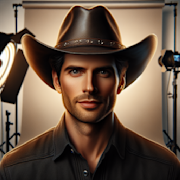Stunning Cinematography in Classic Film Noir: Shadows and Light

Film noir is a genre known for its stylish black and white visuals, atmospheric settings, and moody storytelling. One of the defining elements of this genre is the use of stunning cinematography to create a world of shadows and light. In this blog post, we will explore the art of cinematography in classic film noir and how it contributes to the overall aesthetic and narrative of these iconic films.
I. Introduction to Film Noir and Its Cinematic Styles
Before diving into the cinematography of film noir, let’s briefly review what film noir is all about. Film noir emerged in Hollywood in the 1940s and reached its peak in the 1950s. It is a genre that combines elements of detective fiction, crime dramas, and psychological thrillers. The term “film noir,” meaning “black film” or “dark film,” was coined by French critics in the 1940s to describe a unique style of American cinema characterized by its dark and cynical worldview.
Film noir cinematography relies heavily on lighting, camera angles, and compositions to create a highly stylized visual language. The interplay of deep shadows and stark light contrasts creates an atmosphere of suspense, danger, and moral ambiguity characteristic of the film noir genre.
II. Chiaroscuro Lighting: The Play of Shadows and Light
Chiaroscuro, an Italian term meaning “light-dark,” is an essential technique in film noir cinematography. It involves the dramatic use of light and shadow to create a stark contrast that heightens the visual impact and adds depth to the storytelling.
In film noir, shadows take on a life of their own. The use of low-key lighting, with the predominant presence of shadows, intensifies the sense of mystery and anxiety. Long, dark shadows slither across walls, characters’ faces concealed in darkness, hinting at hidden motives and secrets.
Key light sources in film noir are often positioned to create strong, angular shadows. Venetian blinds, stair railings, and other architectural elements frequently cast patterns onto characters and the environment, further enhancing the visual aesthetic.
III. Expressionist Visual Style: Dark, Twisted Worlds
Film noir owes much of its visual style to German expressionism, a movement that emerged in the 1920s in German cinema. Expressionist filmmakers aimed to externalize the characters’ internal experiences through exaggerated, distorted visuals. This influence can be seen in the use of unconventional camera angles and distorted perspectives in film noir.
Low angles are frequently employed to depict characters as dominant or intimidating, while high angles may make characters appear vulnerable or trapped. Dutch tilts, also known as canted angles, add a sense of unease and disorientation. These innovative camera techniques not only create visual interest but also enhance the thematic elements of the narrative.
IV. Urban Landscapes: The City as a Character
The urban landscape is a prevalent setting in film noir, and cinematography plays a crucial role in capturing the essence of these dark, shadowy environments. Noir cities are often depicted as cold, foreboding, and morally corrupt.
Wide shots capturing towering buildings, empty streets shrouded in mist, and imposing bridges spanning across rivers, all contribute to establishing the sense of place. Cinematographers use deep focus, where both foreground and background are in sharp focus, to emphasize the complexity of these urban landscapes and the characters immersed in them.
Through the clever use of light and shadow, the city in film noir becomes a character in itself, reflecting the moral decay and harsh realities of the world the characters inhabit.
V. Femme Fatales and Lighting: The Power of Seduction
No discussion of film noir cinematography would be complete without highlighting the depiction of femme fatales. These enigmatic and seductive female characters play a central role in many film noir narratives.
Cinematography becomes a powerful tool to accentuate their allure and mysterious nature. Soft, diffused lighting often surrounds these characters, creating an ethereal glow that highlights their beauty while leaving their motives in the shadows.
The contrast between light and dark is also used to emphasize the femme fatales’ duplicity. Harsh lighting casts deep shadows on their faces, hinting at the hidden intentions and danger they represent.
Conclusion
The stunning cinematography in classic film noir leaves a lasting impression on audiences. Through the masterful use of shadows and light, cinematographers crafted a visual world that perfectly matched the dark and morally complex narratives of this genre. Chiaroscuro lighting, expressionist visual style, urban landscapes, and the portrayal of femme fatales all contribute to the unique aesthetic of film noir.
Next time you watch a classic film noir, pay attention to the cinematography techniques employed and appreciate the artistry behind the shadows and light—these elements truly elevate the cinematic experience and underline the timeless appeal of this captivating genre.

Alberto Miller
Movie Fanatic
More From Classics Authority Movies

Movie
Beyond the Screen: Unraveling the Enigma of Alfred Hitchcock's Masterpieces

Movie
Shakespeare in Love (1998)

Movie
The Battle of Algiers (1966)

Movie
Blue Velvet (1986)

Movie
His Girl Friday (1940)

Movie
The Cinematic Canvas: Artistic Influences in Classic Film





